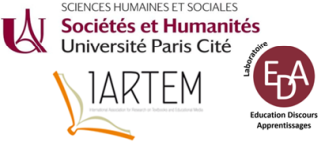REPRESENTATION FORMS OF EUCLIDEAN GEOMETRY QUESTIONS IN SOUTH AFRICAN MATHEMATICS TEXTBOOKS
Tinevimbo Zhou (teetine2002@gmail.com) and Ugorji Ogbonnaya (ugorji.ogbonnaya@up.ac.za)
Abstract
The representation of mathematical problems plays an important role in conveying mathematical concepts to students and facilitating their learning process. When interpreting the curriculum, textbook authors adhere to the advice of theorists by incorporating a diverse range of representational forms to improve comprehension. For this reason, a study was conducted to investigate the forms of representation used in Euclidean geometry questions across three South African mathematics textbook series. The study analysed nine approved textbooks from grades 10-12, belonging to the Classroom, Platinum, and Mind Action series, using the Glasnovic Gracin's mathematical activity types framework as an analytical tool. The aim was to examine the various forms of representation (pure mathematical, visual verbal, and combined form) used in promoting opportunities to learn Euclidean geometry. The method of data collection was document analysis, which looked at over 2,300 tasks from both worked examples and exercise questions in the most commonly used mathematics textbooks.
The findings of the study indicated that the distribution of problems across different forms of representation was not balanced in all three textbook series. For instance, the three textbook series placed a greater emphasis on problems presented in a combined form (CM10:88%, CM11:100%, CM12:100%, PM10:94%, PM11:93%, PM12:97%, M10:100%, MA11:99%, MA12:100%) compared to problems presented in pure mathematical or visual forms alone (0%). Consequently, it can be inferred that students did not have adequate opportunities to learn Euclidean geometry through multiple representations of questions. These findings have implications for theory, practice, and further research.
Keywords: Euclidean geometry, Mathematics, Opportunity to learn, Textbooks, Representation form.

 PDF version
PDF version
